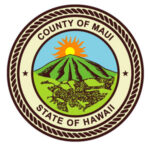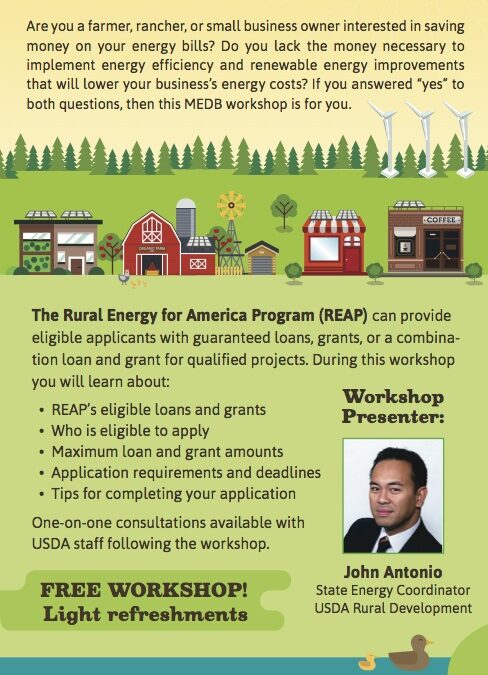
Jul 27, 2016 | Environment, Sustainability
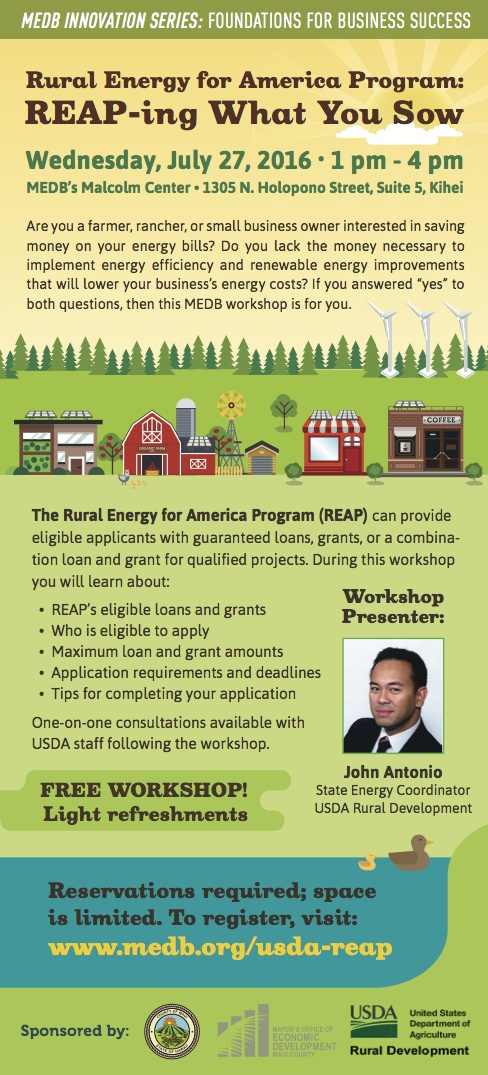 Are you a farmer, rancher, or small business owner interested in saving money on your energy bills? Do you lack the money necessary to implement energy efficiency and renewable energy improvements that will lower your business’s energy costs? If you answered “yes” to both questions, then this MEDB workshop is for you.
Are you a farmer, rancher, or small business owner interested in saving money on your energy bills? Do you lack the money necessary to implement energy efficiency and renewable energy improvements that will lower your business’s energy costs? If you answered “yes” to both questions, then this MEDB workshop is for you.
The Rural Energy for America Program (REAP) can provide eligible applicants with guaranteed loans, grants, or a combination loan and grant for qualified projects. During this workshop you will learn about:
- REAP’s eligible loans and grants
- Who is eligible to apply
- Maximum loan and grant amounts
- Application requirements and deadlines
- Tips for completing your application
- One-on-one consultations available with USDA staff following the workshop.
Workshop Presenter:
John Antonio, State Energy Coordinator USDA Rural Development
The workshop is free, and light refreshments will be served. Part of the MEDB Innovation Series, Foundations for Business Success.
Wednesday, July 27, 2016, 1 pm – 4 pm
MEDB’s Malcolm Center
1305 N. Holopono Street, Suite 5
Kihei, HI 96753
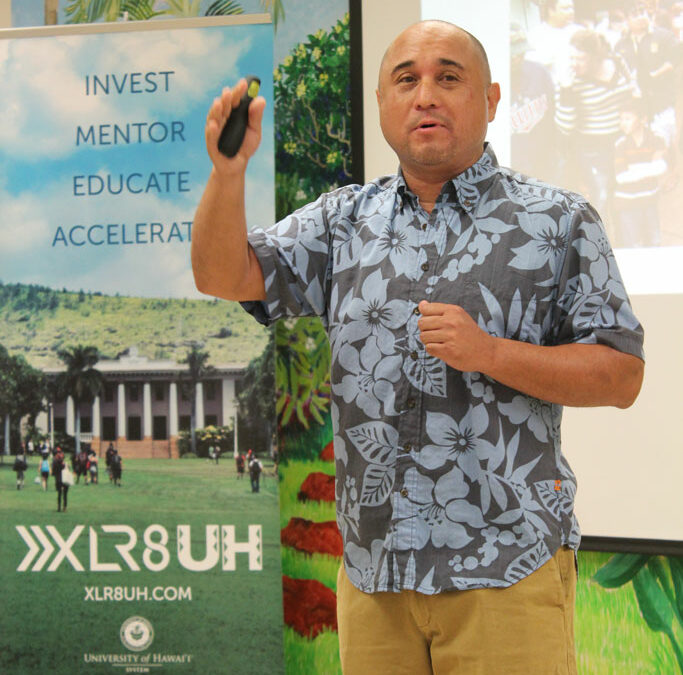
Jul 20, 2016 | Small Business
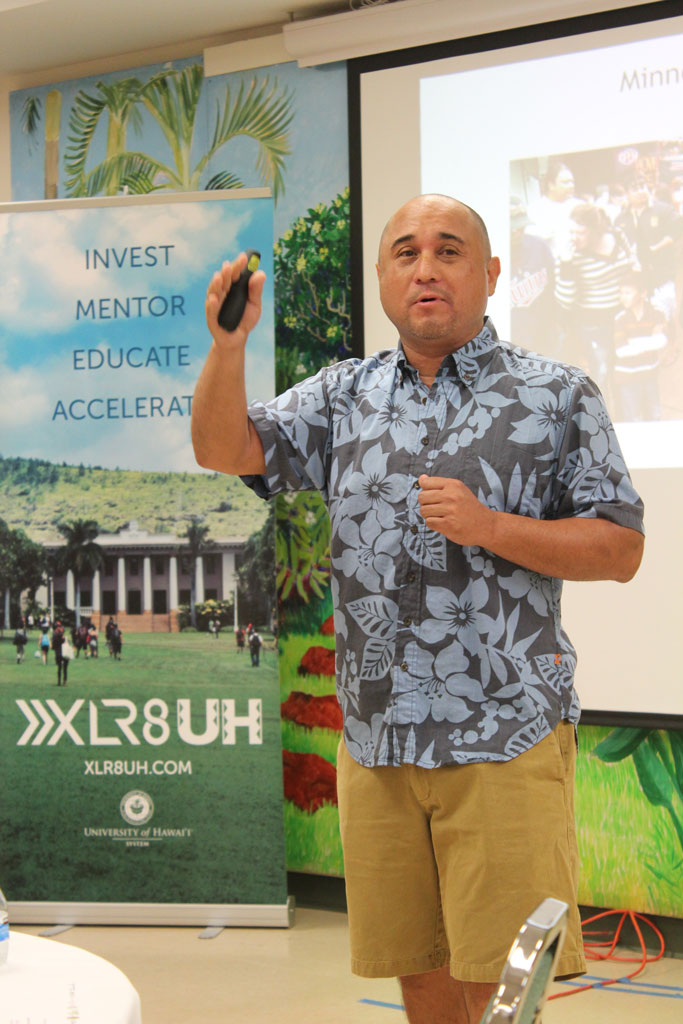 Maui Economic Development Board (MEDB) presented an Entrepreneurs’ Toolkit Bootcamp for Lanai residents on June 25th and 26th. The intense two-day workshop was part of the MEDB Innovation Series, a grassroots effort to help small businesses establish strong systems, processes, tools, and best practices to build a solid foundation for success. The free event provided attendees with helpful tips and resources to assist in launching their startups or boosting their existing businesses.
Maui Economic Development Board (MEDB) presented an Entrepreneurs’ Toolkit Bootcamp for Lanai residents on June 25th and 26th. The intense two-day workshop was part of the MEDB Innovation Series, a grassroots effort to help small businesses establish strong systems, processes, tools, and best practices to build a solid foundation for success. The free event provided attendees with helpful tips and resources to assist in launching their startups or boosting their existing businesses.
The workshop opened with keynote speaker Lanai Tabura. A Lanai native, Tabura is a well known entrepreneur, radio DJ, comedian, and actor. “Treating others with aloha is the way to cultivate relationships with everyone you meet,” Tabura said. “Adaptability and innovation are also a critical trait for an entrepreneur to possess. We adapt by our readiness to take every opportunity that comes to us, and the ability to innovate on the fly points to resourcefulness and creativity.” Lanai’s brother, Chef Adam Tabura, spoke to the group about his entrepreneurial journey and his newest business ventures. In 2013, the two brothers, teamed with Shaun Felipe, took first place on the Food Television Network’s “The Great Food Truck Race”. Additionally, Adam hosted a pau hana Saturday afternoon featuring some of his winning food truck creations.
During the two-day workshop, participants learned the basics of business startup creation using the Lean Startup method with the Lean Startup Canvas (LSC) – think of it as a roadmap. Omar Sultan, Luke Tucker, and Meli James of Sultan Ventures led the workshop. Attendees worked in teams to create a fictional startup or use an idea they created using the LSC, presenting their business plans for feedback. On the second day, the teams pitched their ideas before the workshop team, giving them valuable feedback to ensure the lessons they learned about the Lean Startup method were reinforced. “We were taught how to use the Lean Canvas, an actionable and entrepreneur-focused business plan, which gave us insight into whether we have a solid and effective venture,” said workshop participant Clay Richardson. Lanai resident Jina Lopez added, “This workshop helped me to understand aspects of business I formerly didn’t know how to use, such as creating a business plan. It’s given me a different viewpoint on how to be a leader and implement ideas.”
This event was amazing! The whole weekend gave people inspiration and resources that you pay for in college. My brother Adam and I hope to be a part of many more MEDB Entrepreneur Toolkit Workshops.
Lanai Tabura – Entrepreneur, radio DJ, comedian, actor, and 2013 winner of The Great Food Truck Race (reality television show)
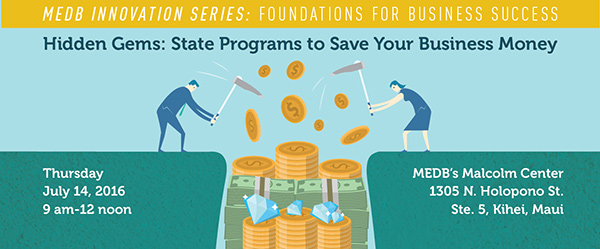
Jul 13, 2016 | Education, Small Business

MEDB offers a powerful workshop to help you save money. Discover TWO State Department of Business, Economic Development and Tourism (DBEDT) programs that can benefit your business:
Enterprise Zones (EZ) Partnership Program
If your new or existing business is located in an Enterprise Zone (EZ), you may be eligible to receive various state tax credits and benefits for up to 7 years, including:
- 100% exemption from the General Excise Tax
- Up to 80% non-refundable state income tax credit
- Up to 80% tax credit for Unemployment Insurance premiums
Hawaii State Trade and Export Promotion Assistance Program (HiSTEP-AP)
Under HiSTEP-AP, your company could receive direct awards to participate in export marketing activities. Applicants may request a minimum of $2,000 and a maximum of $6,000 for various business activities including trade shows, travel, collateral materials, compliance testing, shipping, and other expenses.
Workhop Speakers
The workshop is free. Breakfast will be provided. Reservations are required, space is limited. It is part of the MEDB Innovation Series, Foundations for Business Success.
Thursday, July 14, 2016 • 9 am – 12 noon
MEDB’s Malcolm Center, 1305 N. Holopono Street, Suite 5, Kihei

Jun 30, 2016 | Education, Stemworks

You are invited to attend Pathways to our Future, a benefit for the MEDB Ke Alahele Education Fund.
Bid on hundreds of items during the “Apples for Education” Live & Silent Auctions
Play Family Feud, The STEM Edition
Mingle with Distinguished Educators:
- U.S. Senator Mazie Hirono
- U.S. Senator Brian Schatz
- Lt. Governor Shan Tsutsui and Lyndelle Tsutsui
- Mayor Alan Arakawa and Ann Arakawa
Sponsorship opportunities are available.
Saturday, August 20, 2016 • Fairmont Kea Lani, Maui
4:30 pm Reception/Silent auction • 6 pm Dinner/Live auction
For reservations, visit www.medb.org or call us at 808-875-2300.

Jun 23, 2016 | Education
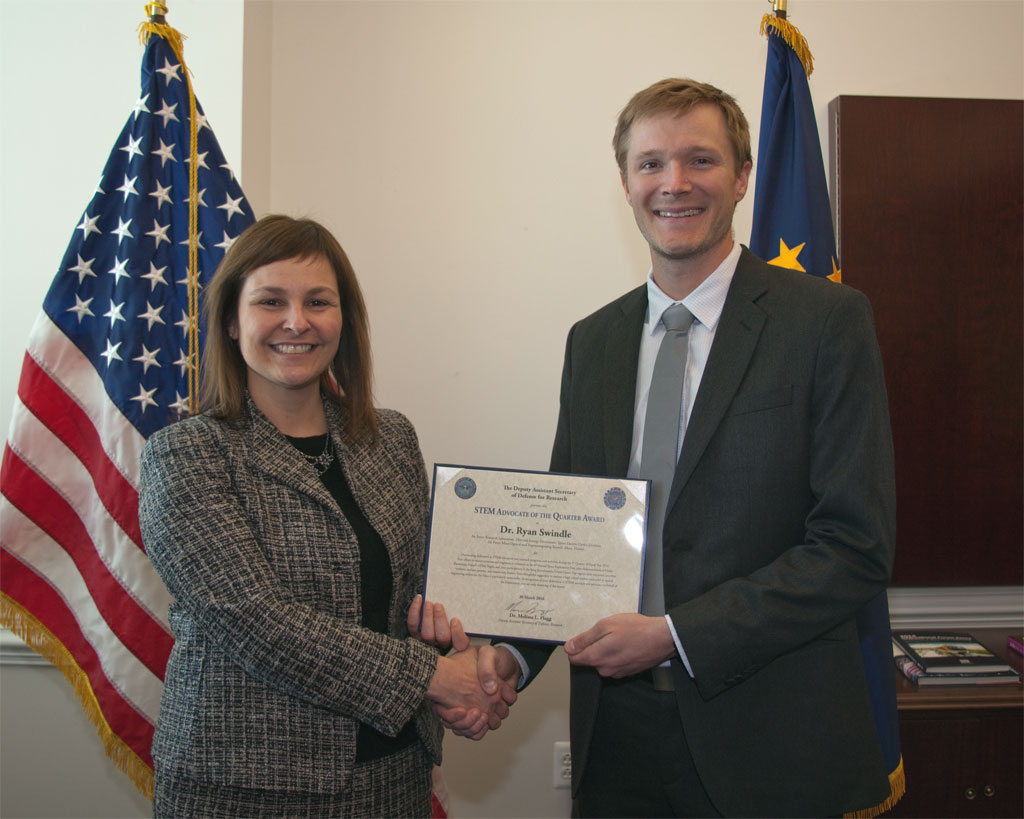
This March, Dr. Ryan Swindle of Air Force Research Laboratory (AFRL), Maui Detachment, received the Department of Defense STEM (Science, Technology, Engineering and Math) Education and Outreach Advocate Award for his dedication to STEM education in the Maui community. “Swindle has established himself as a role model and leader in STEM outreach and educational efforts in K-12 activities, teacher education, and internship programs,” said Dr. Stacie Williams, former AFRL STEM Outreach Director. “His accomplishments in the Maui community are numerous.”
Swindle, a research physicist at the Air Force Maui Optical and Supercomputing Site (AMOS), worked with the University of Hawaii to acquire a 50-person planetarium. “Our new AFRL 50+ capacity, portable, digital planetarium demonstrates to students and educators, the importance of ground-based astronomy across the world,” Swindle said. Recently, at the 2016 Maui Economic Development Board’s (MEDB) Hawaii STEM Conference, he brought the planetarium to teach students how to understand astronomical coordinate systems, use important points to find stars, planets, and even satellites. Additionally, this year Swindle provided physics laboratory demonstrations for over 60 students and parents at a local school and attended school career days. He is also mentoring two college students this summer, one from the University of Hawaii, Hilo and the other from the University of Arizona.
“My vision for the future of the AMOS STEM Outreach program is to build upon the efforts of our former STEM Outreach Director, Dr. Stacie Williams,” said Swindle. “Her great work is known all over the County of Maui.” Swindle hopes to continue efforts with K-12 optics, lasers, and color and light activities, as well as annual participation in AMOS Space Exploration Day and the MEDB STEM Conference. “Partnering with MEDB, AFRL hopes to increase public awareness of the AMOS mission, extend outreach efforts to neighbor islands, and inspire local students to work in Hawaii,” he said.
“MEDB looks forward to our future work with Swindle,” said Mapu Quitazol, MEDB Program Manager Women in Technology (WIT) Project. “His insights and leadership inspire future collaborations with WIT’s STEM education outreach programs.”
I am honored to be able to encourage students to pursue careers in STEM education to find innovative solutions for the challenges we are all facing.
Dr. Ryan Swindle, AFRL Research Physicist
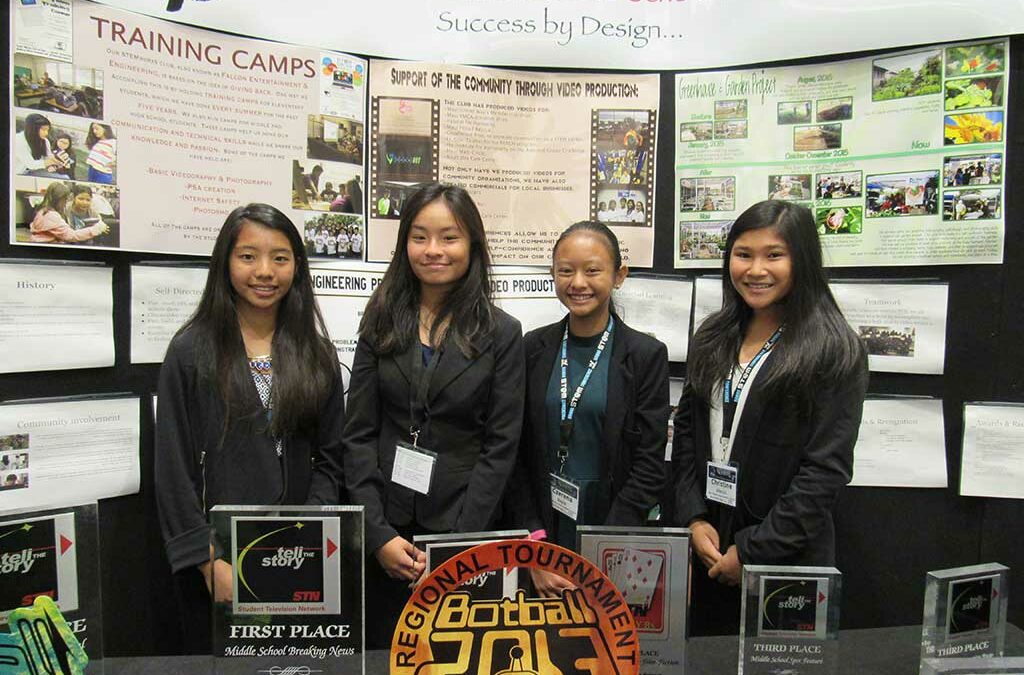
Jun 9, 2016 | Education, Stemworks
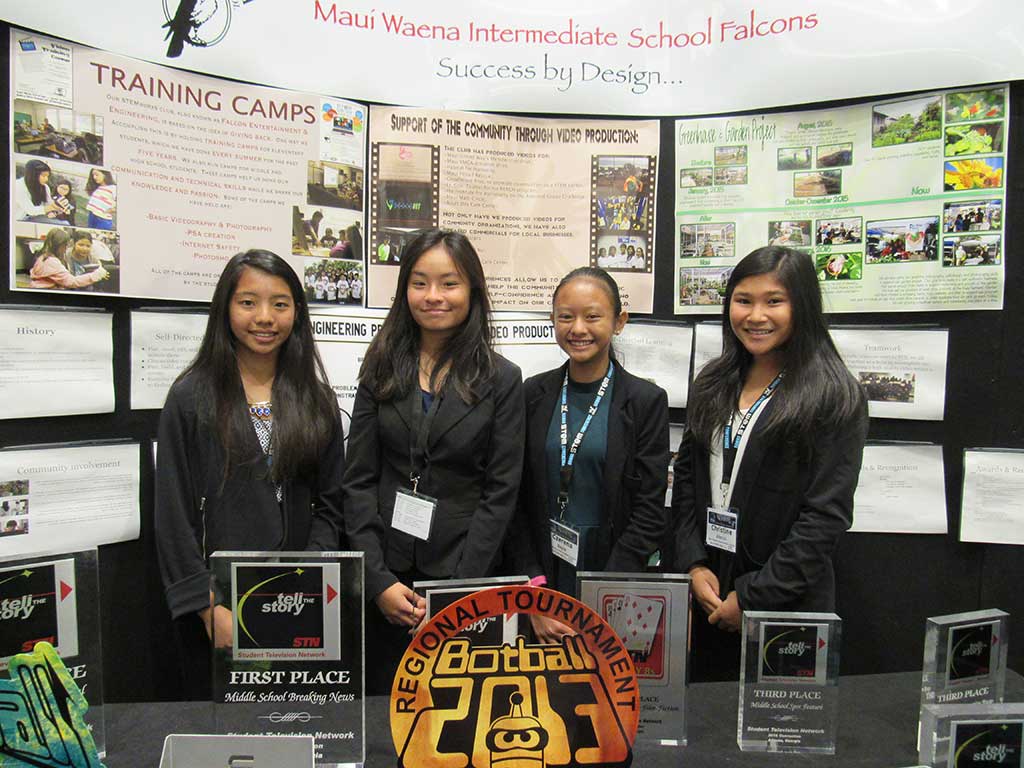
In 1999, Maui Economic Development Board (MEDB) created the Women in Technology Project (WIT) whose mission is to promote science, technology, engineering, and mathematics (STEM) throughout the state with hands-on and project-based service learning. WIT works in partnership with educators and businesses to build and strengthen Hawaii’s STEM education- to-workforce pipeline. Today, WIT provides cutting-edge STEM education across the islands, throughout the year. Effective programs, such as STEMworks AFTERschool, the Annual Hawaii STEM Conference, and more, continue to meet 21st century workforce demands. “STEM education has the power to impact all of us,” said Isla Young, MEDB’s K-12 STEM Program Director. “Through the years, we’ve seen first-hand how empowering our youth with STEM skills and opportunities can make a difference in their lives and in the career pathways they choose to pursue.”
WIT’s STEMworks AFTERschool program is multi-faceted and hands-on. Students get to use the most current, high-end technologies in actual service learning projects. Participants work with their peers and industry partners, using their skills to help improve life on their respective islands. “Through the STEMworks program, I’ve been able to strengthen my love for computer programming,” said Jeremy Amato, a 12th grader at King Kekaulike High School. “STEMworks has allowed me to apply my skills to real-world jobs and even use it to help my community. Now I’m looking at pursuing computer programming as my career choice.” Maui Waena 8th grader Christine Alonzo said, “The STEMworks AFTERschool program taught me how to work a camera. I now know how to write scripts, edit, and use Photoshop. But mostly, I learned the importance of teamwork.”
“We have the power to change the world,” said Thanthawat Moengchaisong from King Kekaulike High School. “I personally love helping the community with the technology around me because STEM is all over the world and it connects people in a powerful way.”
Through STEMworks AFTERschool, I achieved more than I ever thought I could. With the support of MEDB and WIT, my partner and I won first place in a nationwide film competition. Thank you MEDB!
Czerena Bayle, Maui Waena Intermediate School 8th grader
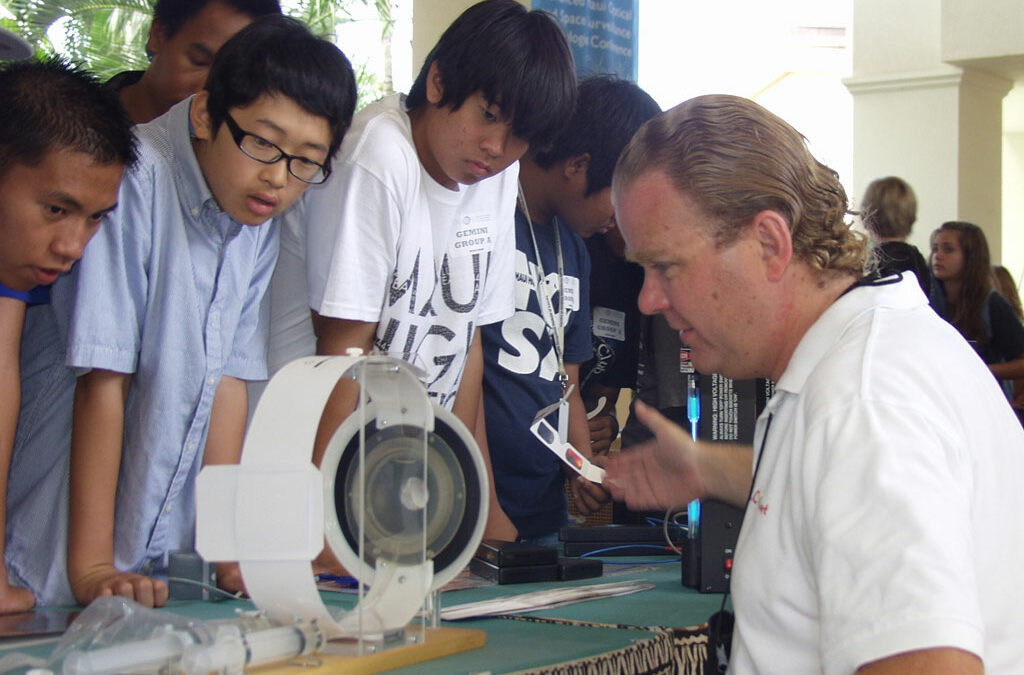
Jun 2, 2016 | Education
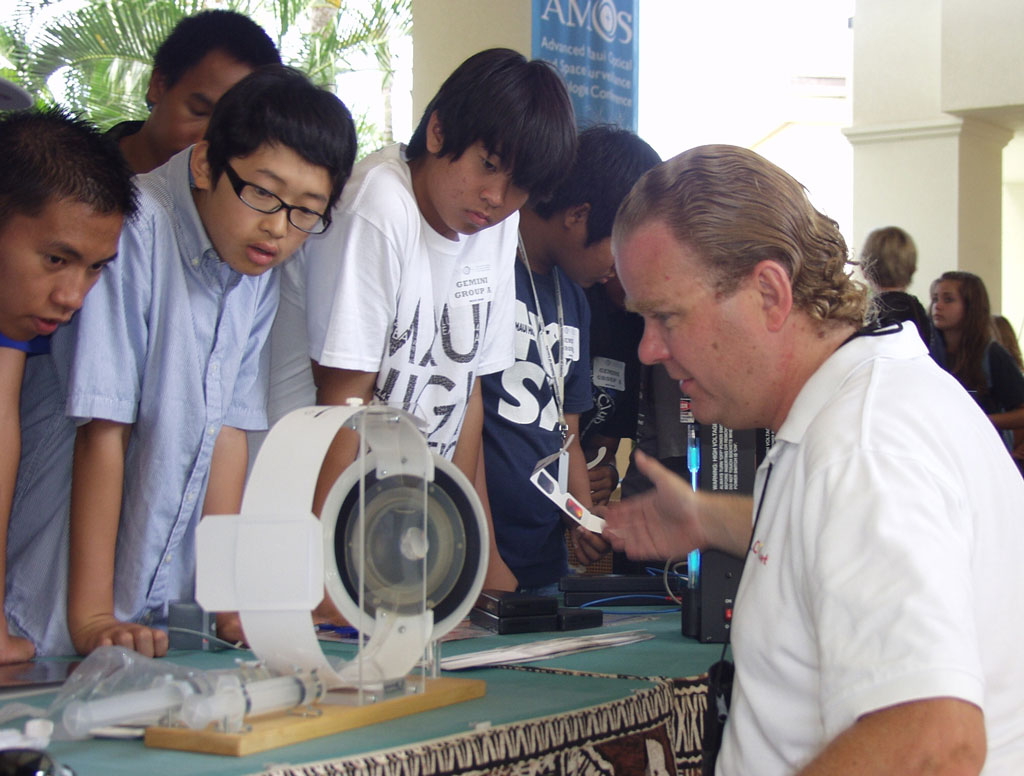
Dr. James “JD” Armstrong, the enthusiastic Maui Technology Education and Outreach Specialist at the University of Hawaii’s Institute for Astronomy (IfA) in Pukalani, is much admired in the community. His work includes research on exoplanets, asteroids, comets, stellar objects, double stars, besides monthly public talks at IfA. “A highlight of my job is mentoring students and assisting with their science projects,” said Armstrong, who manages UH’s time on the Faulkes Telescope North (FTN) atop Haleakala. Owned and operated by Las Cumbres Observatory Global Telescope Network, FTN offers students live views of outer space streamed straight to their computers. “Students remotely observe the sky as it is seen from different parts of the earth via the telescope network,” Armstrong explained. “Using Astrometrica, a software tool that calculates precise positions of the celestial bodies, they are able to analyze the collected image data.”
“JD’s Hawaii Student/Teacher Astronomy Research (HI STAR) summer science program for high school students is unsurpassed, as evidenced by the success of the students,” said Dr. Joe Janni, former Director of the Air Force Office of Scientific Research. “He is a dedicated and enthusiastic mentor who counsels and motivates young astronomers to achieve high honors and numerous awards. His ability to inspire and recognize their potential is unmatched.”
“Armstrong has been a partner of Maui Economic Development Board (MEDB) for over 10 years,” said Mapu Quitazol, MEDB project manager. “Recently he has had students receiving recognition for their science projects. In March at the Hawaii State Science and Engineering Fair, Armstrong’s HI STAR students captured numerous awards.”
“I’ve been very fortunate to have Dr. Armstrong as my mentor for the last five years,” said Celeste Jongeneelen, home-schooled 10th grader and 2016 first-place Physics and Astronomy winner. “He’s encouraged my interest in hypervelocity stars; stars thought to originate when a binary system encounters the supermassive black hole in our Milky Way. Dr. Armstrong has motivated me to better understand the age and classification of these stars. He has given me the confidence to think that I could actually discover something new about the Universe!”
Astronomy is a great way to spread interest in all subjects and motivate learners to pursue science, technology, engineering and mathematics (STEM) to better comprehend the world around us.
Dr. JD Armstrong, Maui Technology and Education Outreach Specialist, University of Hawaii Institute for Astronomy
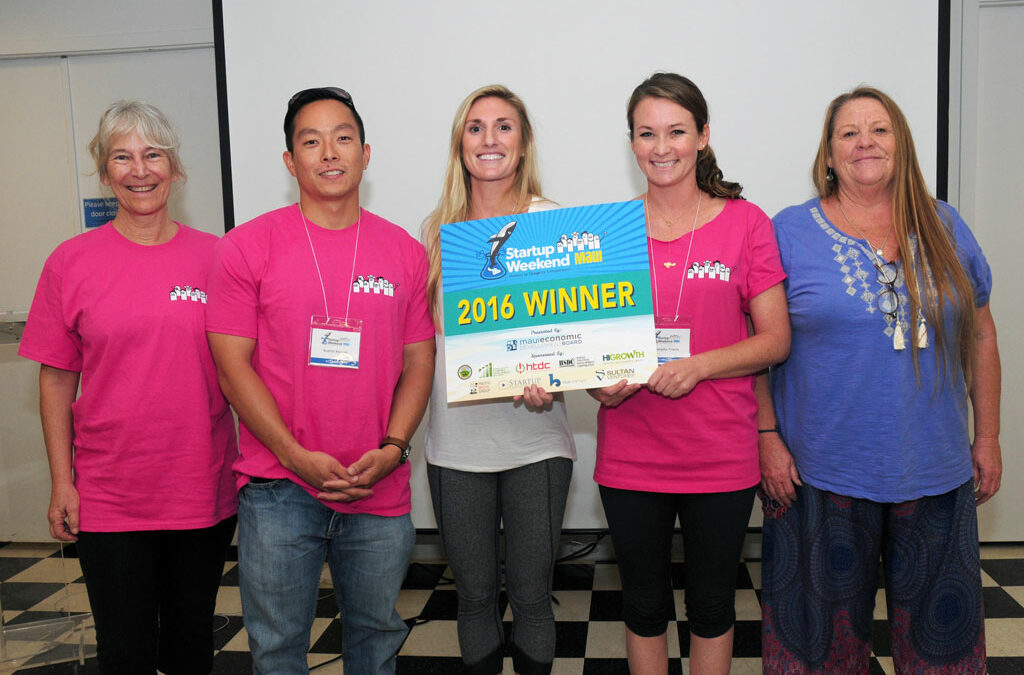
May 26, 2016 | Community
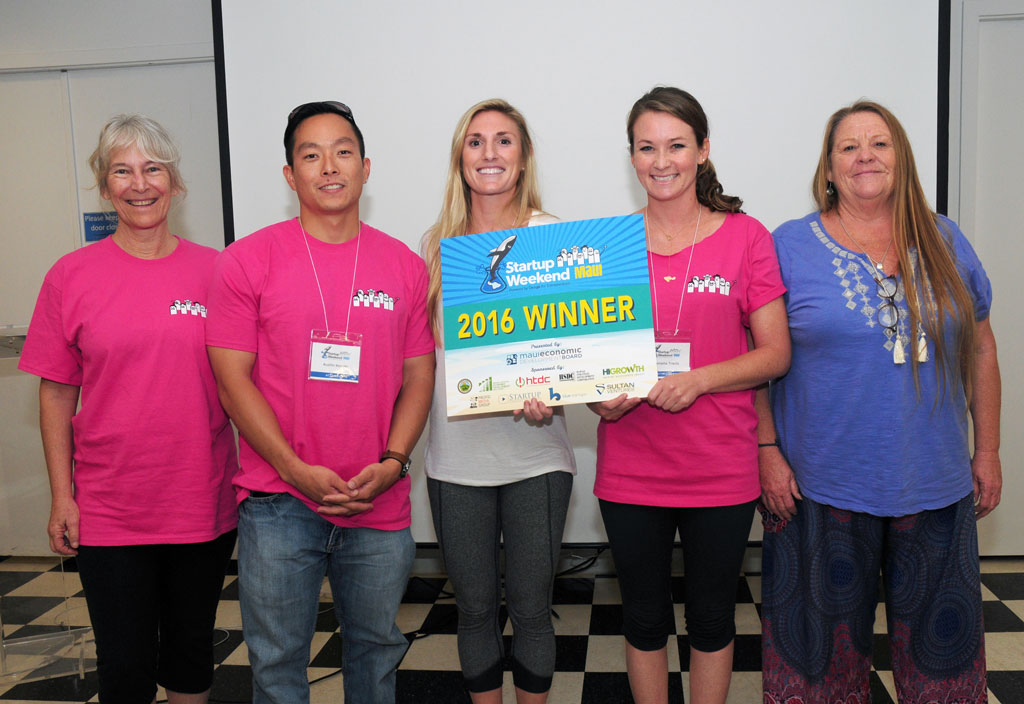
Maui Economic Development Board (MEDB) presented this year’s 2016 Startup Weekend Maui on May 13-15. The event offered entrepreneurs an opportunity to learn in 54 hours how to launch a company. “Startup Weekend Maui is about learning by doing,” says Frank De Rego, Jr., Director of Business Development Projects at MEDB. “It provided a platform to acquire the skills and best practices necessary to build a solid business foundation.”
“Life-changing, motivating, and awesome,” was just some of the feedback received from participants at Startup Weekend Maui. The event started on Friday with 60-second open-mic pitches. Then teams were formed around the top-voted startup ideas. They worked through the weekend with the help of mentors and coaches to build viable prototypes and business models that were presented to a panel of judges on Sunday night.
The 2016 Startup Weekend Maui winner, “The Original FaceGuard”, is an idea to destigmatize the traditional medical mask by creating a positive, preventative public health intervention through trendy face apparel. Team members Danielle Travis, Molly Palmer, Lorayne Lipps, Austin Kozaki, and Julie Lewis, won a business assistance prize package valued at more than $3,000. “It’s not just a product,” said team member Travis. “We want to change people’s perceptions of the typical facemask that most think is so scary. Our facemask has a creative aspect, a health aspect, and positivity, making people laugh.”
The team of Zoe Whitney and Dawn Naiwi-Valentino captured second place for their natural anti-mosquito perfume and cologne. “During the weekend I got a better feel for my target market and was able test the product on both locals and visitors of different ages,” said Whitney. “Working together with my Startup Weekend teammate, we worked hard to gather public feedback and even came up with ideas to modify the product’s ingredients. This overall experience helped me realize that this product could work.”
“MEDB, the coaches, mentors, judges, and all of our event sponsors, helped make this event possible because we believe in investing in our local community and our people’s skills,” said De Rego. “It all added up to one incredible weekend where everyone gained valuable experience.”
Startup Weekend Maui fits perfectly with what we’re trying to do, along with MEDB, at the County of Maui. We’re focused on building an entire entrepreneur eco-system to help our local entrepreneurs gain the needed edge and skills to succeed.
Teena Rasmussen, Director County of Maui Mayor’s Office of Economic Development
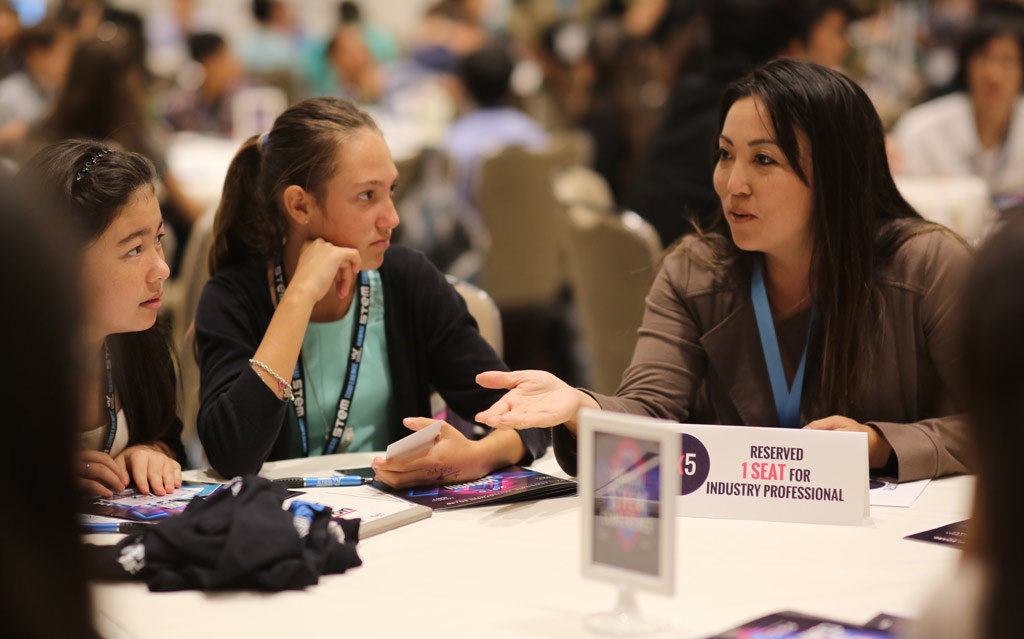
May 20, 2016 | Education, Stemworks

Maui Economic Development Board’s Women in Technology (WIT) Project, in partnership with the County of Maui, presented the 7th Annual Hawaii STEM Conference at the Wailea Marriott Resort on May 6-7. This year, over 880 students, teachers, and industry professionals, offering some of the most innovative global technologies, attended. “Science, technology, engineering, and mathematics (STEM) education has the power to impact all of us,” said Isla Young, MEDB’s K-12 STEM Program Director. “Through the years, we’ve seen first-hand how empowering our youth with STEM skills and opportunities can make a difference in their lives and in the career pathways they choose to pursue.” The two-day, “download knowledge, upload service” themed event featured 43 student breakout sessions, 16 teacher professional development breakout sessions, 15 STEM competitions, a formal awards banquet, and STEM exhibit presentations.
Kicking off the event on Friday, a timed, high-energy mixer, the 5×5 Sessions, gave students the opportunity to engage five different STEM industry professionals in a ‘speed networking’ format to learn about STEM career pathways, personal experiences and insights. “MEDB’s leading effort to inspire these young minds during the annual STEM Conference, in addition to their STEMworks AFTERschool Programs, is simply amazing and greatly appreciated,” said 5×5 industry participant Kimberly Vaitu’ulala, an engineer with Maui Electric Company. “Each year Maui Electric welcomes students from WIT programs. We offer a hands-on science project that thrills participants when they finally get their circuits working!”
During the Conference, Hawaii State Governor David Ige announced that two new Microsoft “Digi Camps” will bring the latest in advanced code training to students in Maui County next year. The County and MEDB’s WIT Project are working closely with Microsoft to develop the Digi Camp agenda and promotion to local schools. “Forming an official Digital Alliance with Microsoft is a significant step toward building Maui County’s future workforce,” said Maui County Mayor Alan Arakawa.”Given the latest challenges to our island’s economy, these kinds of educational opportunities can have a lasting impact.”
Every day, our lives are becoming more dependent on technology, which is why in this day and age, STEM education in the K-12 classroom is so important. The 5×5 Session is our chance to inspire the youth of Hawaii, by giving them face-to-face contact with people in STEM careers and hands-on experience with today’s technology.
Kimberly Vaitu’ulala, Maui Electric Company Engineer
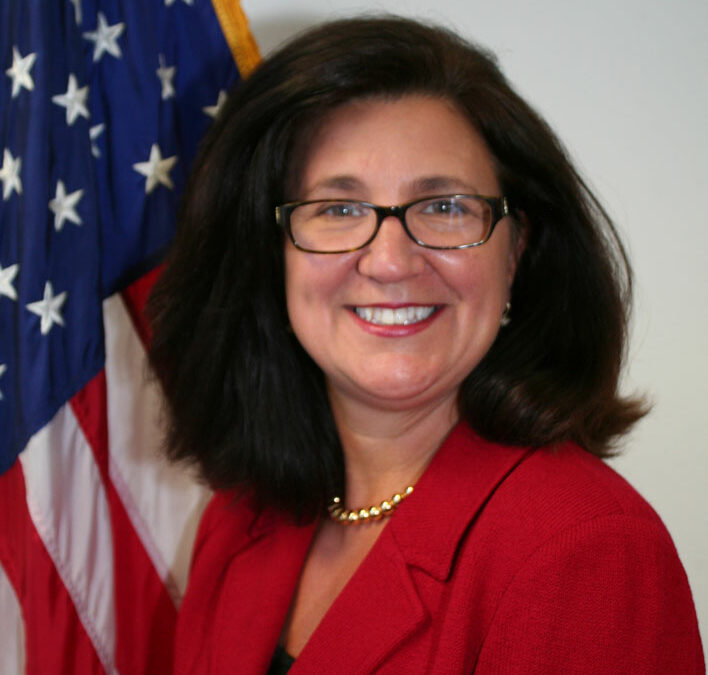
May 12, 2016 | Education, Stemworks
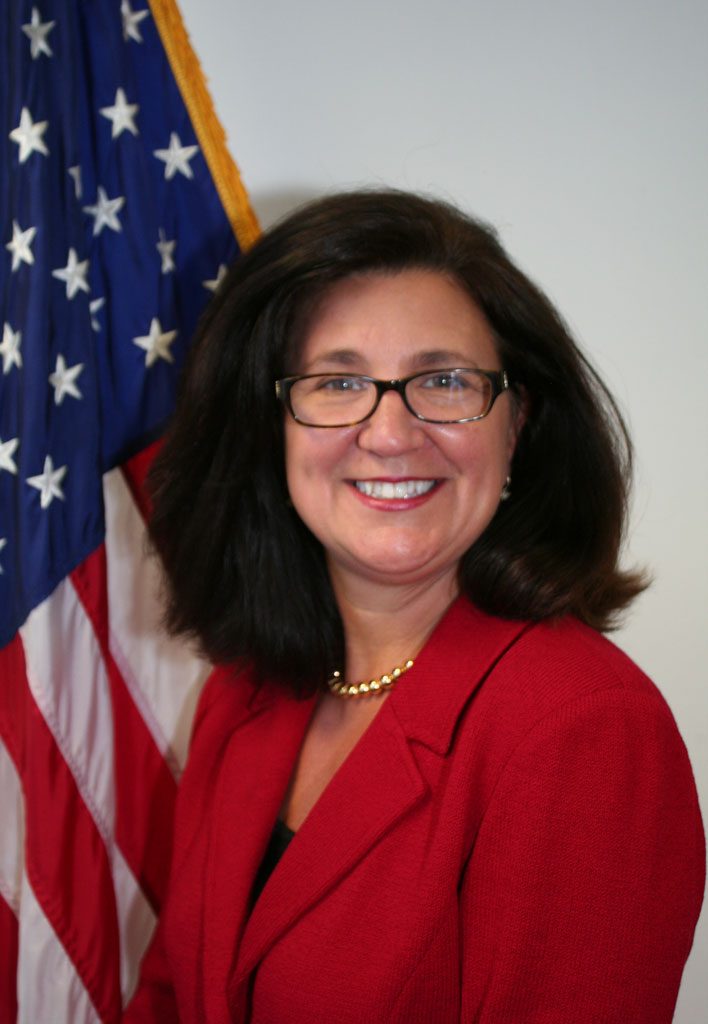
Dr. Stacie Williams
Dr. Stacie Williams, a leading scientist and STEM (science, technology, engineering and mathematics) outreach educator in the Air Force Research Laboratory (AFRL) Directed Energy group on Maui, has accepted a position with the Air Force Office of Scientific Research near Washington DC. During her seven years here, Williams has skillfully juggled a myriad of professional responsibilities in a challenging environment. She led several technical efforts in the areas of imagery, spectroscopy and lasers and has been the manager for AFRL’s daylight and geosynchronous earth orbit imaging programs. As the AFRL group’s STEM outreach director, Williams’ leadership was instrumental in developing a program that annually reaches more than 1,000 kindergarten through 12th grade students and teachers, and influences all 34 Maui County public schools. The program includes teacher development workshops, a STEM curriculum lending library, and opportunities for summer students. “It’s important to show our youth that science can be engaging and that they don’t have to leave Maui to work in high-technology jobs,” said Williams.
“Since 2009, Williams has been a leading advocate in securing Air Force funds to supplement Maui Economic Development Board’s (MEDB) Women in Technology project STEM outreach programs,” said Mapu Quitazol, MEDB project manager. “She has also provided insights on high quality laboratory sets that are available for teachers to borrow from our STEM lending library. We will greatly miss her and her leadership in STEM outreach!”
Williams is featured in the film Maui in Space produced by MEDB with support from the County of Maui. Along with other AFRL officials and with researchers from the University of Hawaii’s Institute for Astronomy, the film introduces the importance of astronomy on Maui. “The video, an extraordinary educational tool, shows how our basic everyday needs require space-related functions and Maui’s important contributions to it,” said Williams. “Our goal, along with MEDB, is to continue to educate teachers and inspire students to explore the STEM fields for Hawaii’s future.”
“Working for the Air Force as a scientist is an honor,” Williams added. “I believe the AFRL and MEDB STEM programs will have a far-reaching impact on the future of our youth. I will miss Maui!”
By developing STEM programs for our youth, AFRL and MEDB are working together toward engaging Maui students at an early stage to use technology for improving Hawaii’s future.
Dr. Stacie Williams, AFRL Scientist and Outreach Education Director

 Are you a farmer, rancher, or small business owner interested in saving money on your energy bills? Do you lack the money necessary to implement energy efficiency and renewable energy improvements that will lower your business’s energy costs? If you answered “yes” to both questions, then this MEDB workshop is for you.
Are you a farmer, rancher, or small business owner interested in saving money on your energy bills? Do you lack the money necessary to implement energy efficiency and renewable energy improvements that will lower your business’s energy costs? If you answered “yes” to both questions, then this MEDB workshop is for you.















